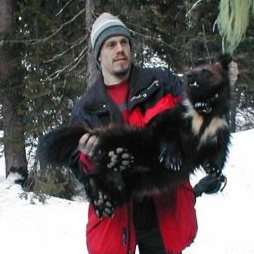Landscape Genetics
A special issue of Genes (ISSN 2073-4425). This special issue belongs to the section "Population and Evolutionary Genetics and Genomics".
Deadline for manuscript submissions: closed (30 June 2018) | Viewed by 6826
Special Issue Editor
Interests: landscape ecology; landscape genetics; forest ecology; climate change; wildlife ecology; disturbance ecology; population biology; landscape dynamic simulation modeling; landscape pattern analysis
Special Issues, Collections and Topics in MDPI journals
Special Issue Information
Dear Colleagues,
Landscape genetics is a new and rapidly evolving interdisciplinary field that combines concepts and methods from population genetics, landscape ecology and spatial statistics. A fundamental goal of landscape genetics is to quantify the effects of landscape composition, configuration and dynamics on spatial patterns in neutral and adaptive genetic variation and underlying microevolutionary processes. Several areas of focus have been recently emphasized to for future development of landscape genetics research. Among these challenges are understanding the effects of different spatial and temporal scales of analysis (challenge 1) and current analytical limitations when testing for landscape-genetic relationships (challenge 2). Another challenge is related to expanding the focus of landscape genetics from the assessment of gene flow to analyses of the distribution and spread of adaptive genetic variation (challenge 3). The goal of this special issue is to bring together some of the best minds in the field of landscape genetics today to present the latest advances on these important questions.
Prof. Dr. Samuel A. Cushman
Guest Editor
Manuscript Submission Information
Manuscripts should be submitted online at www.mdpi.com by registering and logging in to this website. Once you are registered, click here to go to the submission form. Manuscripts can be submitted until the deadline. All submissions that pass pre-check are peer-reviewed. Accepted papers will be published continuously in the journal (as soon as accepted) and will be listed together on the special issue website. Research articles, review articles as well as short communications are invited. For planned papers, a title and short abstract (about 100 words) can be sent to the Editorial Office for announcement on this website.
Submitted manuscripts should not have been published previously, nor be under consideration for publication elsewhere (except conference proceedings papers). All manuscripts are thoroughly refereed through a single-blind peer-review process. A guide for authors and other relevant information for submission of manuscripts is available on the Instructions for Authors page. Genes is an international peer-reviewed open access monthly journal published by MDPI.
Please visit the Instructions for Authors page before submitting a manuscript. The Article Processing Charge (APC) for publication in this open access journal is 2600 CHF (Swiss Francs). Submitted papers should be well formatted and use good English. Authors may use MDPI's English editing service prior to publication or during author revisions.
Keywords
landscape genetics
scale
gene flow
selection
landscape structure
landscape change






